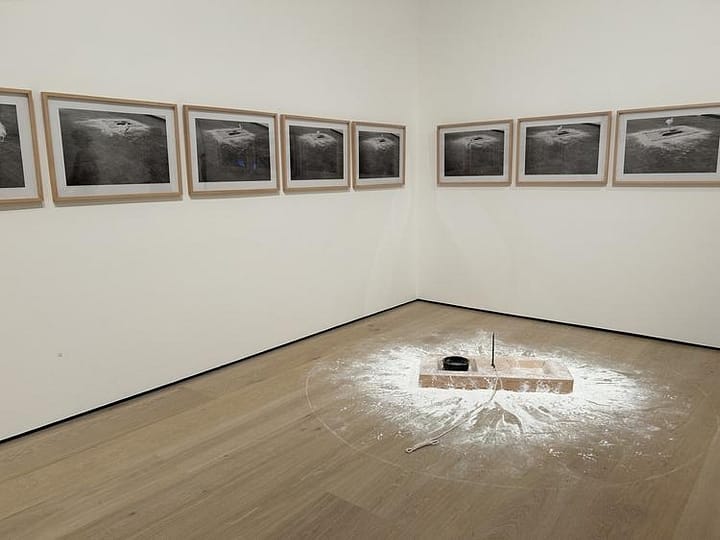ONLY THE YOUNG: EXPERIMENTAL ART IN KOREA, 1960s – 1970s
Hammer Museum
Los Angeles
Through May 24, 2024.
Inside the collegiate enclave that is the UCLA-adjacent neighborhood of Westwood, art history is being made.
It might come as a surprise that, though Los Angeles boasts vibrant Korean neighborhoods, the Hammer Museum’s Only the Young: Experimental Art in Korea, 1960s – 1970s marks the first time an exhibit highlighting Korean experimental art has come to the West Coast. On a breezy, sunny Saturday, I rubbed shoulders with carefree undergrads in the light-filled, open-air museum. Their conversations drifted by as I grappled with my ability to discuss an art form whose very purpose is to transcend language. I don’t mind — the reminder that youth continues business as usual in the face of personal semantic challenges is humbling and uplifting.
Only the young, indeed.
The exhibit that I had just wandered through boasted a variety of pieces from different mediums. Abstract oil paintings sat next to photographs from performances. A plastic case of cigarettes affixed to the wall looked out onto a room in which a giant pair of 3D lips sat front and center. Due to the nature of the art or the period during which it was made, some of the original pieces had been lost to time. Replicas were provided where necessary: Lee Kun-Yong’s Corporeal Term (1971), a huge tree trunk (sourced from Pennsylvania), sits in one of the galleries, shedding red clay, and in a corner next to it is Lee Kang-So’s Untitled 75031 (1975), a recreation of a performance wherein a chicken was tied to a pole in the middle of a pile of flour.
These pieces were made during a period of darkness and unrest. In 1967, the reverberations of the Korean War were still echoing, and President Park Chung Hee, who had seized power by means of a coup six years earlier, was on the verge of becoming a dictator. Korea’s neighbors were reshuffling themselves as well: trade with Japan, a former colonizer, was becoming the norm, while tensions mounted in Vietnam.
It is no wonder, then, that the artists of the next generation were searching for new language to describe this permeating unease.
Performance art pieces such as Haircutting (1970, 1978), wherein the artist photographed his locks being shorn in front of an audience, took on a new meaning with this context. The artist Chung Chan-seung had been arrested multiple times for simply having long hair. Similarly, for his installation Disappearance — Bar in the Gallery (1973), Lee Kang-So constructed a bar complete with snacks and drinks in a gallery space, a statement that becomes pointed in light of the implementation of the Yushin Constitution, which banned political gatherings, earlier that year.
Only the Young telegraphs unrest, unease, frustration, disorder, and defiance. As with all good art, it doesn’t readily unfold in front of you, waiting patiently to be interpreted. Instead, the pieces work as placeholders to describe the space that they’re not. The chicken’s footprints in the flour are the negative to the space and time that was once filled in a moment. An apple core, traced in marker as it disappears into the subject’s mouth in a series of animation-like still photographs, gives us pause.
The pieces highlight the tension between the corporeal and the ephemeral. They don’t encompass ideas as much as they describe moments. Chronology and decay are the processes that make these pieces exhilarating. Their replication doesn’t distract from their intention. The pieces challenge our idea of art, of originals, of what is worth capturing and what is overlooked.
The central struggle for these young Korean artists seems to be not defining universal truths but instead sketching out the boundaries of a cultural consciousness. These sketches define its limitations, its neuroses and the borders of its inadequacies. And by making the intangible visible, by defining the indefinable, they move art towards a new definition. Surrounded by the next generation of artists and thinkers, I am reminded that only the young can pull us from the old and give us a new way to think of the world.






